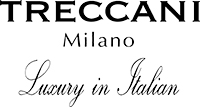The Mystery of Tuxedo Shoes: When, Why and How? Posted on 6 Aug 13:13
As it turns out Tuxedo shoes did not come first, second or third to the tuxedo ensemble we know and cherish today. In fact very little is known about tuxedo shoe origin only that it was added to the tuxedo name as it grew in popularity.
But here’s what we do know . . .

The tuxedo itself gained popularity in 1888 when the style was named after Tuxedo Park, a Hudson Valley enclave for New York’s social elite to go sip champagne, etc.
After this unofficial naming it grew from the social elite to be welcomed by many in the 1930s. However, the tuxedo at first only included the jacket. That was all.
This idea grew when it was even more integrated into the average male’s daily life. With more customers there was a greater demand and thus new pieces of clothing were added to fit that demand. With the invention of special pants and other suit accessories that began to appear in the 1900's, such as the vest, the idea of a tux resonated across the world to reach the status it has today.
Somewhere, in all of that, tuxedo shoes appeared and gained prominence along with the whole outfit. In the beginning there was one tuxedo shoe style, but that has since branched out to welcome the modern look with the traditional.
The traditional tuxedo shoe has a rounded toe. It is usually black or dark brown with 3/4 quarter to 1 full inch heel. It is called a rounded toe because the shoe is designed to wrap around the front of the wearer's toes to achieve a minimalist design. Thus with great design comes also some great room for variations as it is said if your foot has more width in the front, you will likely be stretching the size of the shore to create an almost pointed look to attain the same effect.(The shoes shown below can be seen at The Bata Shoe Muesum in Toronto, Ontario as worn by Screenwriter David Shamoon when he attended the 2012 Academy Awards® ceremony in Los Angeles).
The modern tuxedo shoe design (shown below) boasts a square toe which fixes the whole issue of sacrificing comfort for fashion. The modern man can have both a sleek , and socially acceptable, look while maintaining his toes have room to breathe. While the comfort level of the tuxedo shoe has shifted the heel height has remained within the exact same parameters.
Defining characteristics of formal footwear remain about the same as they always have. The phrase is ‘aesthetic minimalism’. Meaning a “small, slim, and narrow feet give a light, quick, and (and hence) young lift to the overall silhouette”. So its light and easy to dance in while also a chic fashion choice. While tuxedo shoes also happen to look like slippers sometimes.

One interesting tidbit of information explains the high gloss and absolute need for formal shoes to be shined to high standards. This is because the shoe is supposed to act as a mirror to reflect “the outfit’s various silk facings as part of black tie’s sophisticated contrast of textures”, all adding to the grandeur of the tuxedo itself.

Sources:
https://en.wikipedia.org/wiki/Tuxedo
http://www.tuxedoshoes.net/traditional_tuxedo_shoes.htm
http://www.blacktieguide.com/Classic/Classic_Footwear.htm
http://www.dailymail.co.uk/tvshowbiz/article-2498015/Not-holding-George-Clooney-lays-Leonardo-DiCaprio-Russell-Crowe-praises-Brad-Pitt-candid-interview-yet.html
http://coolspotters.com/shoes/jeremy-scott-tuxedo-shoes
http://supernaturalhunter67.deviantart.com/journal/?offset=1
http://tinytux.com/cart/boys-black-square-toe-tuxedo-shoes-tiny-penguins-closeout-p-133.html



